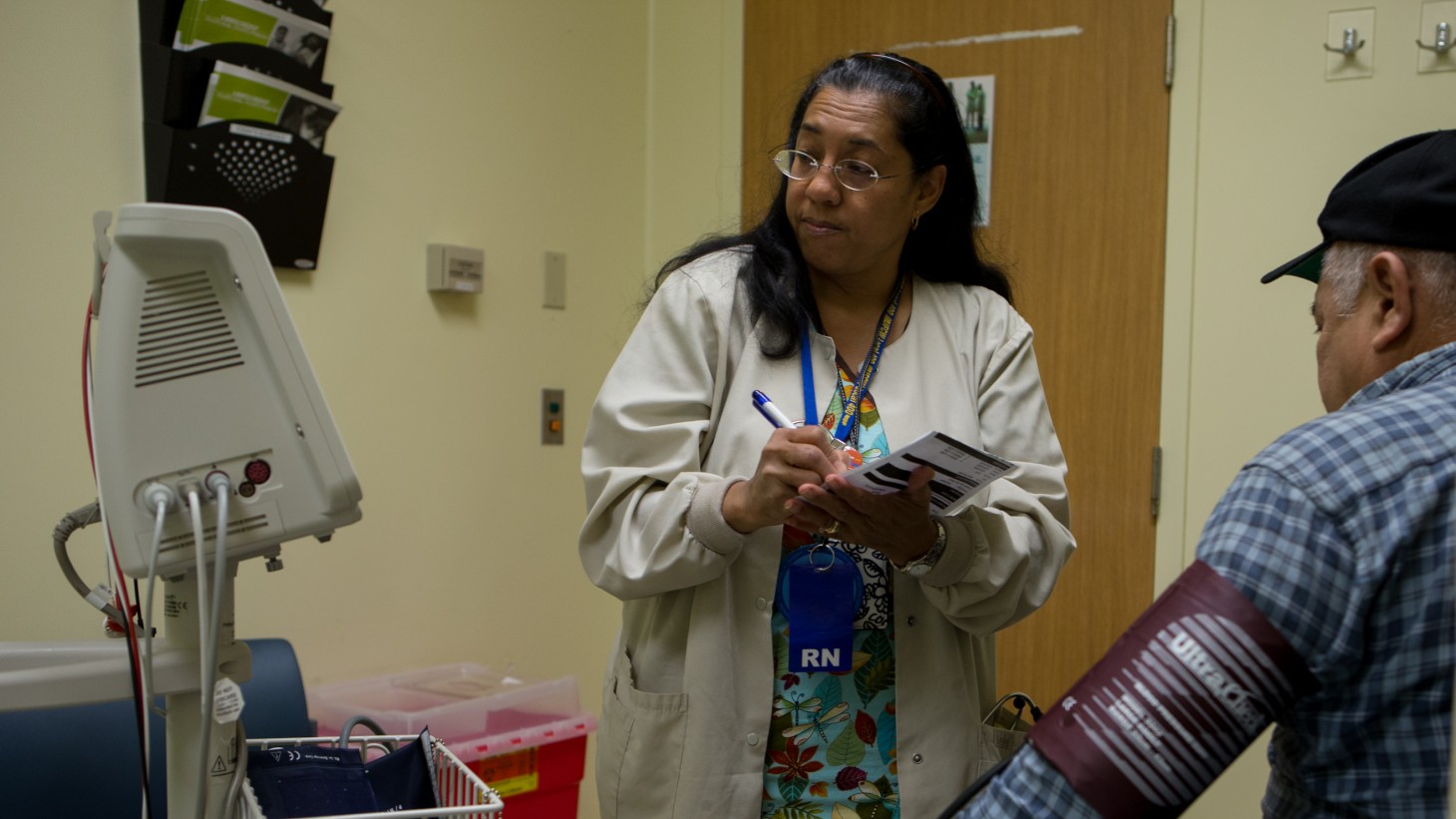Around the Regions (Winter 2013)

Isolina Pistoessi, Adult Primary Care RN, Falls Church, Va.
Saving pennies, saving lives
Colorado
When the Minor Procedures department at the Franklin Medical Office added three surgeons to its staff, the impact was positive: Access improved—patients got in faster. But staff members noticed the new surgeons were using $20 to $30 more in dressings and drapes than surgeons who had been in the department longer. The physicians responded positively when shown the information and, while allowing for medically justified exceptions, have standardized their usage of soft goods so it is more cost effective.
Georgia
The Oncology/Infectious Disease staff at the Cumberland Medical Office Building embarked on a medication reconciliation project to keep patients safe and avoid unnecessary hospital admissions. A manual cleanup of patient records came first. To check the accuracy of the records, medical assistants and licensed practical nurses, all members of UFCW Local 1996, called patients and asked them to bring their medications (or a list) to their next appointment. Providers deleted duplicates and worked across clinical disciplines and with pharmacy colleagues to sustain and improve the process. In just three months in 2011, the percent of duplicate medications fell to 15 percent, which translates to $90,000 saved by reducing hospital admissions.
Hawaii
The nurses in the 23-bed Mother/Baby unit at Moanalua Medical Center learned a lesson in human nature when they placed life-saving emergency airway kits—essential for keeping a weak infant's airways unobstructed—at each bedside. Individual parts of the kits come in handy in other procedures and regularly turned up missing. Keeping everything in zippered plastic bags with a “do not remove” sign didn’t do the trick. But after the team started re-purposing breast pump kit bags--which are sturdier and have labels with room to list the kit’s contents, whether an item has been used and if it’s been replaced—the team went from 75 percent of beds with fully stocked kits to 100 percent in four months.
Mid-Atlantic States
The Adult Primary Care UBT in Falls Church, Va., is using the New Member Identifier tool in KP HealthConnect as the basis for targeted welcome letters and phone calls to set up appointments with primary care physicians and help refill prescriptions. And, when a new member comes in, he or she is provided with a new member kit and offered a one-on-one facility tour. Patient satisfaction percentile scores have risen from 84.6 in the first quarter to 87.4 in the third quarter. Cassandra Hodziewich, MD, a family practice physician, says more new members “are getting needed labs (and) screenings."I think it’s made a difference in the quality of their care."
Northern California
Santa Clara Medical Center showcased its performance improvement work in October to eight UBTs from five regions as part of a two-day LMP learning lab. Visiting the Cardiovascular ICU, the delegation learned how the team uses visual boards to share improvement ideas and track projects. The Pharmacy department explained how it used Six Sigma to reduce workplace hazards, and the Women’s Clinic department outlined its use of process mapping to reduce lab errors. On returning home, the visitors were tasked with finding ways to implement some of what they learned.
Northwest
The Primary Care Team B staff at the North Lancaster Medical Office feels especially strongly about the importance of detecting colorectal cancer early, when it’s highly treatable, since some of their own providers have suffered from the disease. The team, which presented a poster at the Institute for Healthcare Improvement conference in December, tracks who’s eligible for a Fecal Immunochemical Test (FIT) kit, makes sure those members get one, and follows up if the kit isn’t returned. And staff members tell patients how early detection made the difference for their co-workers. The return rate is now 85 percent, up from 50 percent. “We add a personal touch by telling our story,” says labor co-lead Bill Waters, a medical assistant and SEIU Local 49 member, “and people respond.”
Ohio
The Parma Internal Medicine UBT has had a host of successes in its journey to becoming a high-performing team. In addition to improving meetings by defining roles and responsibilities, it has ensured sponsor support and increased staff engagement by creating sub-committees to work on projects. One of its innovative tests of change? Team members decided that while continuing to reduce actual wait times, they would work on the perception of time that patients experience while waiting—and created a slide presentation. The slideshow plays on computers in exam rooms and features health information on chronic diseases.
Southern California
The Bonita Primary Care unit-based team in San Diego, which was included in a poster presentation at the annual Institute for Healthcare Improvement conference, set out on a four-month blitz to reduce its supply expenses by 10 percent, or about $4,750. The team agreed to decreased minimum levels of stock and made diagrams of shelves with new quantities. Staff labeled bins and removed, combined and organized the excess stock, and then used the excess as the primary source for exam room restock over the next four months. As a result, fewer supplies were stocked in exam rooms, fewer supplies were ordered and less stock expired (which would have needed to be replaced). In five months, the team saved nearly $24,700.
